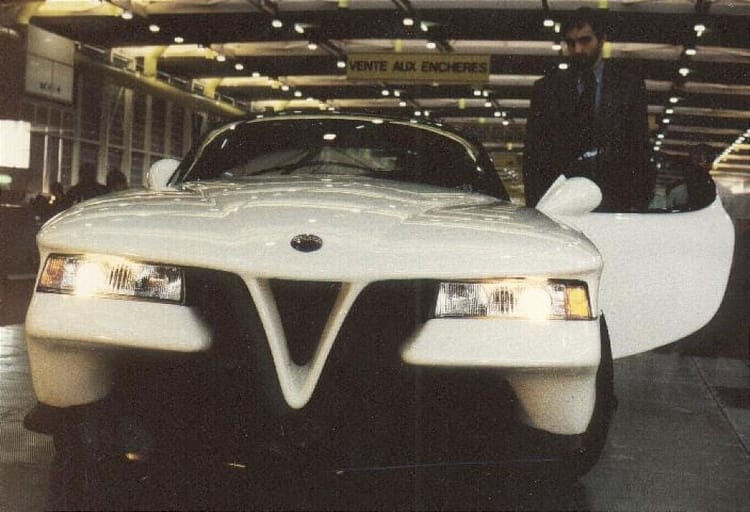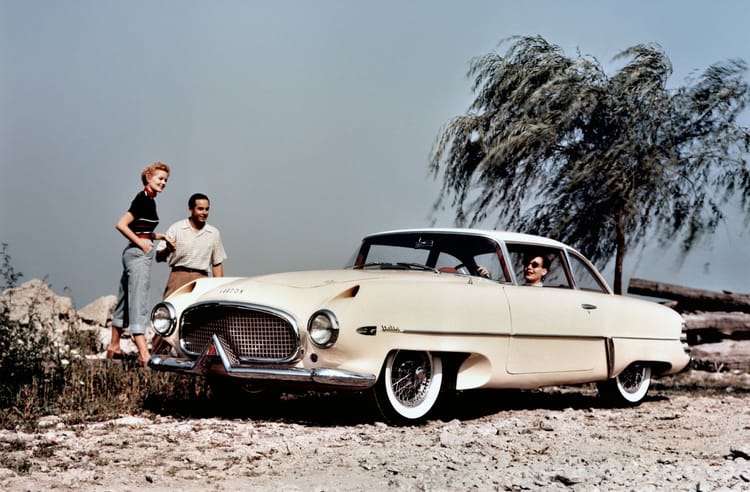FEI X-1
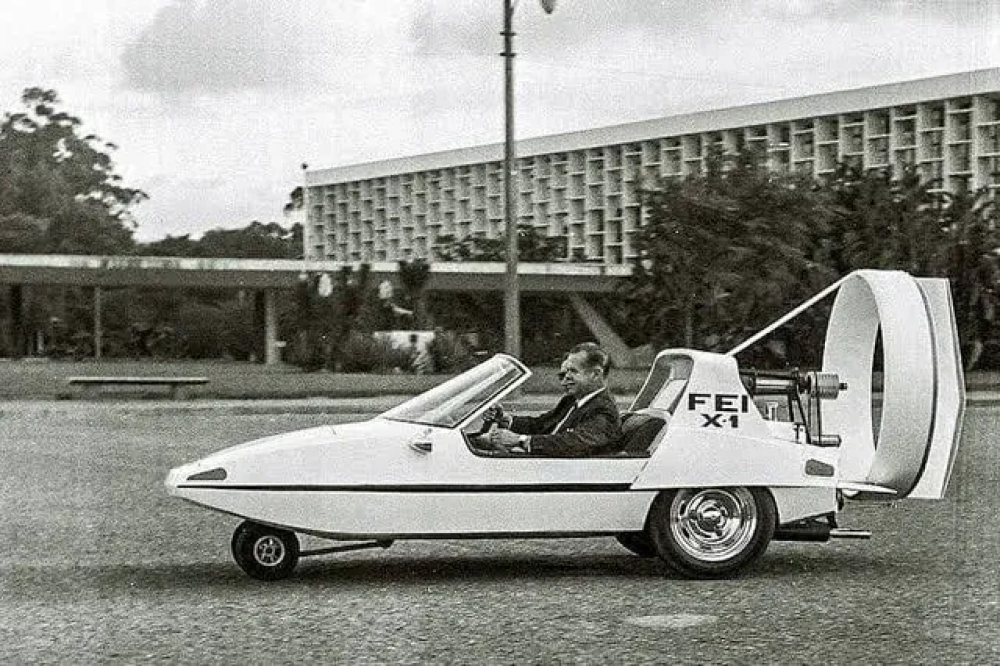
It’s Brazil, it’s the late 1960s, and in a class at Fundação Educacional Inaciana, led by Engineer Rigoberto Soler, who worked on the Brasinca 4200 GT / STV Uirapurú (I’ve written about it) — pushed students at the school to create this masterpiece in just 60 days.
If you’re skimming: FEI is a school.
FEI school made a fan / car / boat.
Fan / car / boat still exists.
I found a review of it.
More of that utterly brilliant clip in a minute.
Intended for the São Paulo Auto Show in late 1968, the FEI X-1 project was to be a headline-grabbing moon shot, where faculty may have hoped to use the vehicle to show off its capabilities as a school and to ride a wave of promotion until its next star car was finished.
The brief that Soler and his students set about completing was very ambitious: an amphibious recreational vehicle that was at home on both land and water. From photos, it looks like they succeeded, with a novel-for-1968 combination of a very narrow front axle with small tires to reduce drag while in water, a buoyant fibreglass body with sporty looks, and a honkin’ great fan to push it down the road.
Not down onto the road, like a McMurtry Spéirling. Down the road, like a fan car.
The key is ‘recreational vehicle’ — and although it looks incredibly zany, and drives like a pogo stick, the X-1 is not unlike off-road products of that time, including dune buggies and even personal watercraft.
There’s a lot of wishful thinking here, sure, but would you rather an X-1 or a first-generation Tesla robot? Exactly.
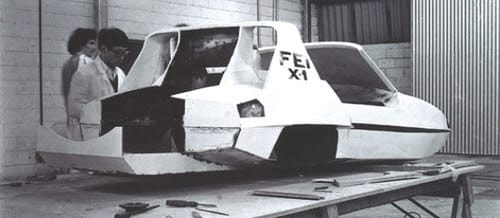
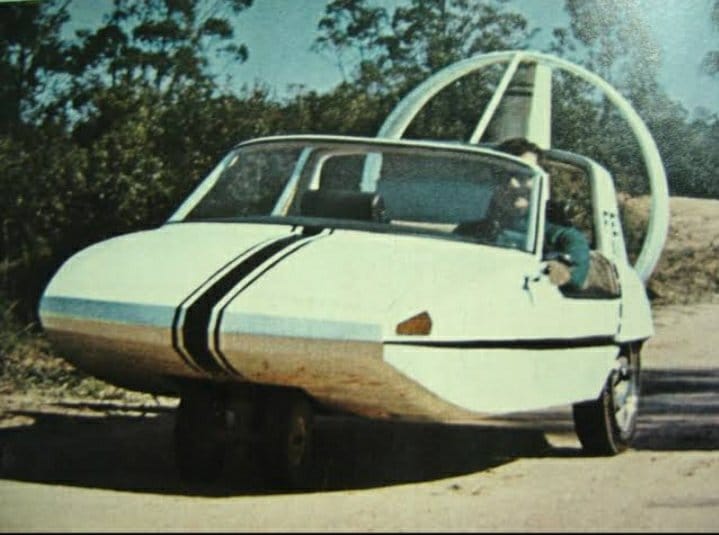
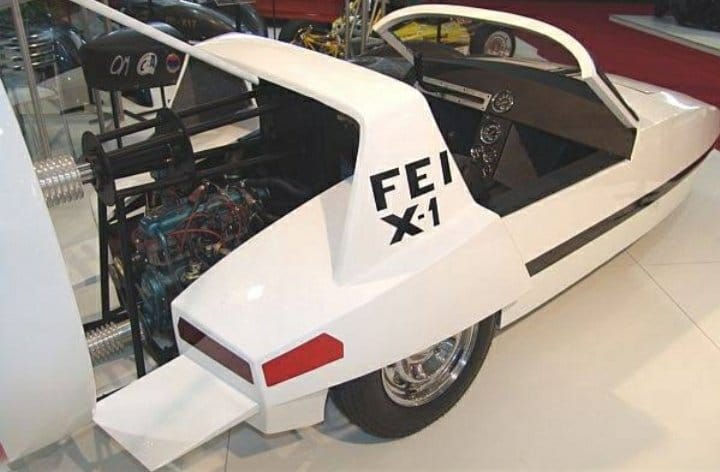
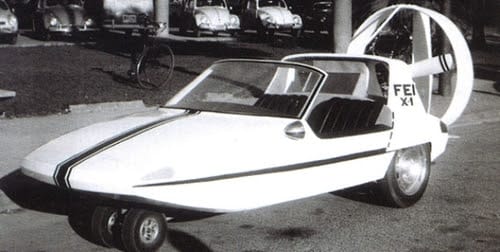
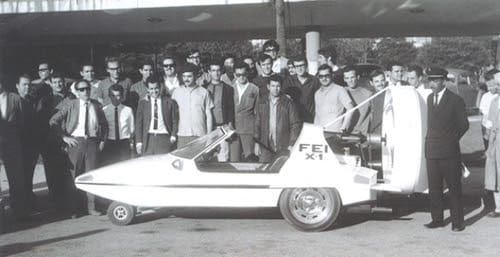

Mix of FEI X-1 publicity images and later one(s) from test drives, museums, and an outdoor show • pinterest, Facebook, source(s) unknown
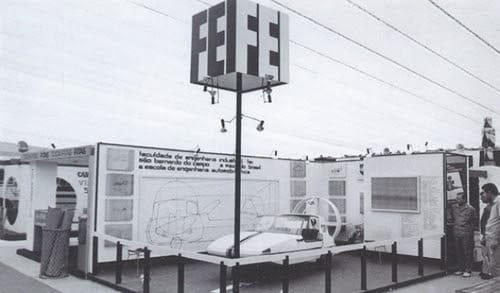
First quirk: its strange stance is thanks to the mismatch of tires: the fronts are from a racing (go) kart, and the rears are from a Gordini.
Second quirk: it’s rear-engined, with a 40 horsepower, 850cc 4-cylinder Renault Gordini engine and a two-speed transmission. (Back then, Renault had a local production partner in Brazil, Willys, even producing its Alpine sports car as the Willys Interlagos.)
Third, and final quirk: being a vehicle meant for fun, this radical 380 kg (840 lbs) machine was meant to lift its nose at speed.
As part of the project specifications with so much weight over the rear axle, the engine is designed to lift the nose of the X-1 at speed, balancing the vehicle on just the two rear tires — steering at all speeds was meant to be aided by a massive rudder.
Really, get rid of the fan and what is this? A Nissan BladeGlider.
Or, what you’re looking at here is a (mostly) working version of the Simca Fulgur, minus a thermonuclear reactor for an engine, yes I’ve written about it too.
Said to be capable of more than 150 km/h (93 mph) on land (!!) and 20 km/h (12 mph) on water, the X-1 remains an impressively-imagined answer to a question nobody had bothered to ask.
Today, could this concept be refined with a few fly-by-wire controls and some drone rotors?
Some were brave enough to take its joystick controls and go for a buzz, and, as promised, this Brazilian (in Portuguese) review transcends any language.



